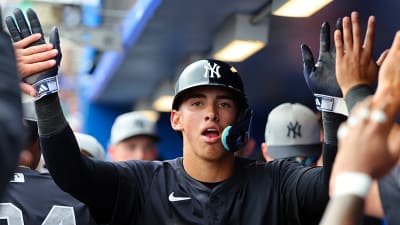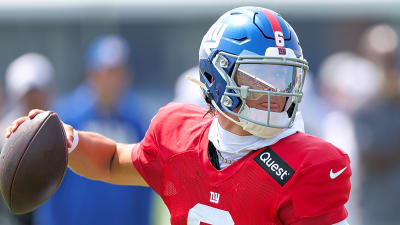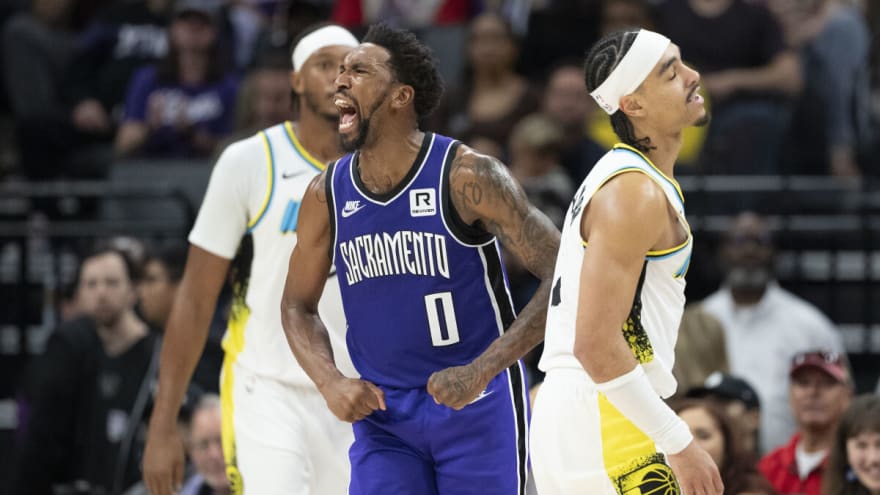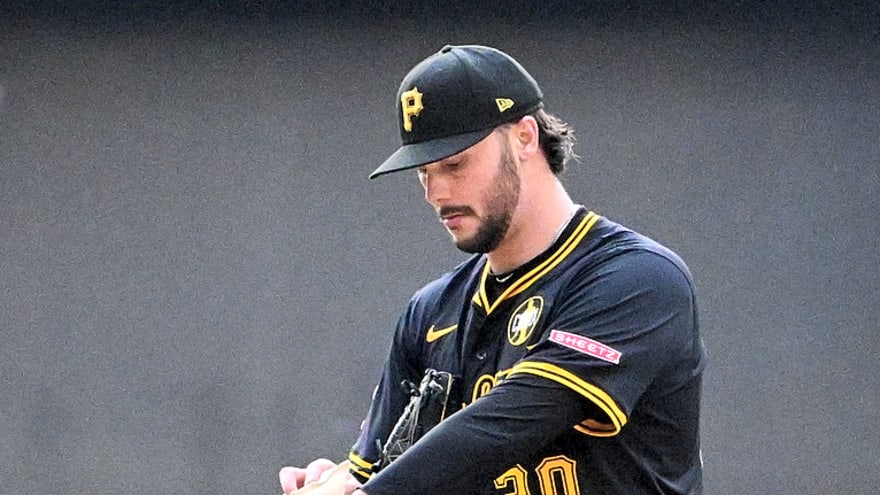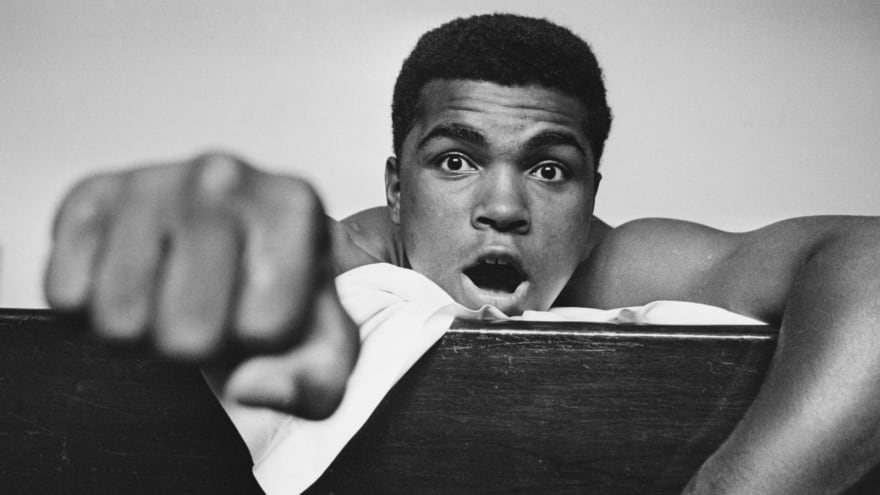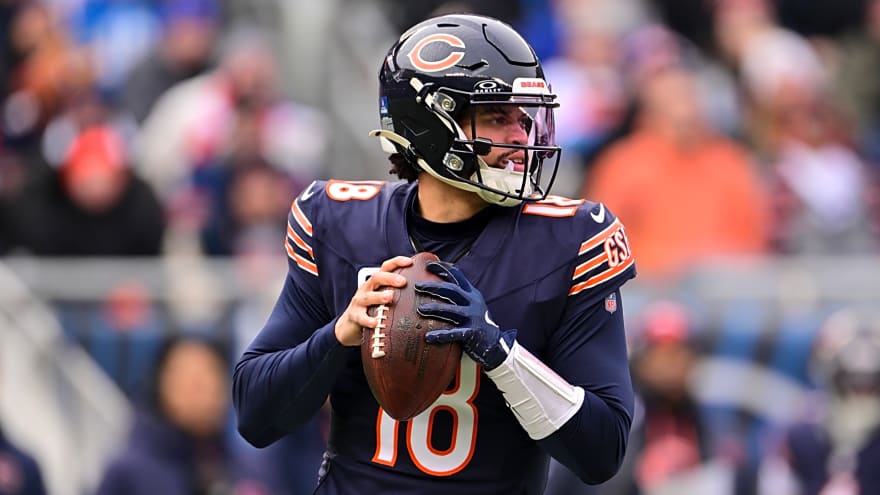
Scottie Barnes has established himself among the best players in the NBA.
The 2024 All-Star is coming off an excellent season where he averaged 19.9 points, 8.2 rebounds, 6.1 assists, 1.3 steals and 1.5 blocks per contest while shooting 47.5% from the field and 34.1% from the three-point range in 60 games.
On Monday, ESPN's Adrian Wojnarowski reported that Barnes has agreed to an extension with the Toronto Raptors.
Via Wojnarowski: "ESPN Sources: Toronto Raptors All-Star guard Scottie Barnes intends to sign a five-year maximum rookie extension that could be worth up to $270 million. Barnes is the franchise cornerstone and will become the highest paid player in Raptors history."
ESPN Sources: Toronto Raptors All-Star guard Scottie Barnes intends to sign a five-year maximum rookie extension that could be worth up to $270 million. Barnes is the franchise cornerstone and will become the highest paid player in Raptors history. pic.twitter.com/c5efNmNl4a
— Adrian Wojnarowski (@wojespn) June 24, 2024
Barnes will have to make an All-NBA team for the contract to reach $270 million.
Via Front Office Sports: "Scottie Barnes' max extension will make him the highest-paid player in Raptors history.
His projected annual salary:
2025-26: $38,775,000
2026-27: $41,877,000
2027-28: $44,979,000
2028-29: $48,081,000
2029-30: $51,183,000
TOTAL: $224.9M
It can reach $270M if he makes All-NBA."
Scottie Barnes' max extension will make him the highest-paid player in Raptors history.
— Front Office Sports (@FOS) June 24, 2024
His projected annual salary:
2025-26: $38,775,000
2026-27: $41,877,000
2027-28: $44,979,000
2028-29: $48,081,000
2029-30: $51,183,000
TOTAL: $224.9M
It can reach $270M if he makes All-NBA. pic.twitter.com/a2jx93JcHG
Barnes was the fourth pick in the 2021 NBA Draft out of Florida State.
He has career averages of 16.6 points, 7.4 rebounds, 4.7 assists and 1.1 steals and 1.0 blocks per contest while shooting 47.4% from the field and 31.1% from the three-point range in 211 regular season games.
The 22-year-old has also appeared in four NBA playoff games (three starts).

The Raptors are coming off a year where they were the 12th seed in the Eastern Conference with a 25-57 record.
They missed the NBA playoffs for the second straight season.
More must-reads:
- Four-time All-Star's contract status puts pressure on Hawks in 2025-26
- Celtics' ownership move should concern Lakers governor Jeanie Buss
- The 'NBA minutes leaders by season' quiz
Breaking News
Trending News
Customize Your Newsletter
 +
+
Get the latest news and rumors, customized to your favorite sports and teams. Emailed daily. Always free!
TODAY'S BEST

Six Major Toronto Raptor Storylines Heading into the 2025-26 NBA Season
Preseason rarely decides a season, yet it often reveals trends coaches and players embrace early. This preview matters for Toronto because a young roster is now defining roles and habits. Last year closed with optimism, tempered by lessons about process, health, and late-game execution issues. Six storylines stand out, tying together personnel returns, development surges, and evolving tactical preferences ahead. They offer a framework for what progress should look like when games start counting again. Fans should watch integration, depth, and defense, while noting how structure translates into efficiency nightly. Each section below traces a discrete focus, grounded in the team’s recent numbers and context. The picture that emerges is pragmatic, cautious about conclusions, yet clear about the necessary steps ahead. 1. Ingram’s Health and Fit With Toronto’s Core Toronto’s most significant variable is Brandon Ingram returning from the ankle sprain that stalled momentum. He received a plasma-rich platelet injection on April 9, with progress rechecked in May. Before the trade, he averaged 22.2 points, 5.6 rebounds, and 5.2 assists for New Orleans. He also signed a three-year, $120 million extension, underscoring organizational belief in his fit. Preseason minutes should emphasize chemistry with Scottie Barnes, Immanuel Quickley, and RJ Barrett on ball. Spacing, delay actions, and handoffs can spotlight his playmaking without stalling possessions. Medical clearance matters, but role clarity matters more for smoothing touches and decision-making tempo overall. If rhythm appears early, lineups featuring Ingram and Barnes could punish switches and rotations consistently, a factor sure to draw attention from odds makers and fans tracking lines on FanDuel Sportsbook. If timing lags, Toronto can throttle usage, preserving health while protecting core offensive principles early. 2. Poeltl’s Paint Protection and Coverage Tweaks Jakob Poeltl remains the stabilizer, anchoring paint coverage and orchestrating actions from the elbow every night. Early last season, he was asked to play higher in pick-and-roll, with mixed outcomes. Later, he dropped more often, protecting the rim and closing cracks more comfortably. Coaches leaned on his reads, toggling sets to lift shot quality for teammates. Poeltl, 29, is the oldest signed player, giving this group a needed veteran anchor presence. During the NBA preseason, the Raptors should frequently experiment with coverage depth, weakside tagging rules, and early-clock rim runs. His health matters, given a late-season metacarpal contusion that warranted careful management recently. If he anchors drop while wings chase over, rotations can tighten without sacrificing rebounding positioning. If the staff prefers higher coverage, second-line timing, and stunts demand crisp preseason reps, together. 3. Barnes’ Two-Way Ascension and Leadership Test Scottie Barnes enters camp as the fulcrum, balancing usage, efficiency, and defensive responsibility this preseason. He averaged 19.3 points, 7.7 rebounds, and 5.8 assists across 65 appearances last season. Toronto’s defense surged to second after the All-Star break, settling 15th on aggregate. Barnes anchored coverages, switching, rotating, and cleaning mistakes while energy stayed remarkably consistent. Coaches experimented with heavy on-ball responsibility, which produced lessons alongside occasional downturns in production. Preseason will spotlight decision speed, screening angles, and when to attack versus facilitate reads. Barnes also finished the year managing a metacarpal contusion, so the workload should be scaled prudently early. Leadership questions become far easier to answer if efficiency rises while defensive impact holds. If not, guard pairings and late-clock structure must support him without blunting aggression or creativity. 4. Rajakovic’s System: Process Gains vs. Scoring Output Darko Rajakovic kept modern principles, building motion, delay actions, and handoff sequences into habits. Toronto threw the sixth-most passes and ran the third-most cuts, emphasizing continual movement across possessions. Isolations were the fewest in the league, with handler-finished pick-and-rolls the fourth-fewest. Handoffs were frequent, ranking eighth, while Poeltl toggled sets cleanly to lift shot quality. Results lagged, with the offense finishing 26th, after placing 24th the prior season overall efficiency. Clutch stretches hurt further, as the group posted the second-worst overall net rating late league-wide. Preseason focus should test counters that preserve movement while generating cleaner pull-up spacing windows. Health for Immanuel Quickley, Barnes, and Ingram could turn process gains into actual scoring. Bench lineups must also sustain tempo, so structure persists even during substitution waves consistently. 5. Rookies and Newcomers Pushing a Defensive Identity Toronto doubled down on defense, adding prospects who can pressure, swarm, and finish possessions. Collin Murray-Boyles arrived ninth overall, after averaging 1.5 steals and 1.3 blocks for South Carolina. At the combine, he measured 6-foot-6.5 with a 7-foot-0.75 wingspan and weighed 239 pounds officially. Second-rounder Alijah Martin posted 1.5 steals, measured 6-foot-1.5 without shoes, and weighed 208 pounds. Undrafted guard Chucky Hepburn signed a two-way contract after winning ACC Defensive Player honors. He averaged 2.4 steals as a senior, bringing on-ball toughness and turnover creation upside. Returnees Ja’Kobe Walter, Jonathan Mogbo, and Jamal Shead add continuity from last year’s rookie minutes. Toronto allowed 115.2 opponent points per game, ranking 18th, and addressed that with real depth. 6. Raised Expectations After a Rebuild Year Last season ended with a 30–52 record and a clear developmental mandate from leadership. Toronto finished seven games back of the final play-in, which strategically aligned with rebuilding priorities. The organization framed the year as the first phase in a three- to five-year project roadmap. That approach yielded a high pick, adding Murray-Boyles and retaining Brandon Ingram on extension terms. Players voiced playoff aims, but healthy availability and consistency must precede any ambitious targets. Preseason becomes a checkpoint, translating optimism into matchups, substitution patterns, and reliable closing groups nightly. What to Watch as Roles Solidify If these threads align, optimism turns concrete, and opening weeks become a launchpad rather than a tease: Use preseason to track availability updates, especially Ingram’s ankle and Barnes’ workload ramp timelines closely, Note how spacing evolves in delay actions when Quickley and Ingram effectively share initiator duties, Watch Poeltl’s coverage depth, then check whether wings sync rotations without conceding corner threes frequently, Track steals, deflections, and on-ball pressure from Murray-Boyles, Martin, and Hepburn in bursts against starters, Assess late-clock structure, given last year’s second-worst clutch net rating under pressure and pace control, Consider organizational signals, since leadership changed following the draft. That shaped accountability pathways for players and staff, Finally, substitution patterns should be monitored; a sustained tempo should survive bench minutes without drift or slippage. A Thrilling Raptors Preseason Ahead The Raptors enter the preseason with more clarity than a year ago but no shortage of questions to answer. Health for Brandon Ingram and Scottie Barnes, the integration of defense-first rookies, and fine-tuning Darko Rajakovic’s system will all shape how quickly Toronto can turn optimism into results. If depth, defensive buy-in, and late-game execution align, this young roster has a genuine chance to turn a rebuilding year into the foundation of a playoff push.

Former crew chief frustrated by the 'ridiculous' racing at Watkins Glen
It is no secret that NASCAR's current road-course package has not been very good. Aside from the mile-and-a-half tracks that were once the least competitive and exciting in the series, those races are the rare bright spot for the Next Gen Car since its inception in 2022. Shane van Gisbergen drove away to an 11.1-second win over Christopher Bell in Sunday's race at Watkins Glen and set multiple records in the process. While the racing was not particularly exciting, that was not what left former crew chief and current analyst Steve Letarte frustrated the most following the weekend. A recurring issue in each race over the weekend was drivers utilizing the runoff areas around the track and not staying on the traditional racing surface, which ultimately led to some crashes in Saturday's Xfinity race. "So, I hate track limits that have to be officiated," Letarte said on "Inside the Race." "Because I like tracks that you should just stay on the track. I didn't think it mattered. Now, I am team get-them-back-on-the-race-track-at-Watkins-Glen. I don't love the Watkins Glen that I see. ... I think Turn 1 is not as great of a corner with no exit respect or responsibility. You just blow the exit. I think the carousel is a much easier corner, being able to just go driver's left. "I also think Turn 6 is going — let me add, that I think the (Connor) Zilisch, SVG wreck between the last two corners (in the Xfinity Series race) happened because they left the track, and the Austin Hill wreck with Michael McDowell happened off the race track. Now, both could have been avoided, we can talk about who's at fault. What I'm saying is, I've never driven a lap at Watkins Glen. I can analyze what happens between the white lines." This comes one year after rumble strips were placed in Turn 1 to keep drivers from using the runoff area, and that clearly has not worked. As the field has got closer together, using up all the track has become a common way for drivers to establish momentum, especially as they prepare for the right-hander going into The Esses at Watkins Glen. The bottom line is NASCAR's road-racing product needs to get better and Letarte wants to see race cars "stay on the race track because I think it will be a better race." Van Gisbergen's historic dominance certainly does not help, but the overall road course product is not great. Whether NASCAR makes some changes to the runoff areas and enforces track limits remains to be seen, but that still may not be the biggest issue if the racing does not improve.

Steelers' Ben Roethlisberger Thinks It Is Clear Preseason Hero Will Be Playing Elsewhere In 2025
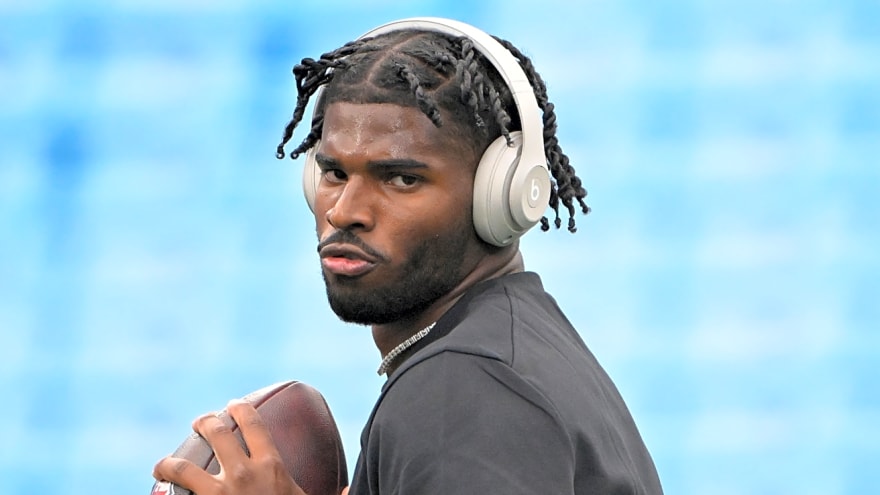
Browns may not be prepared for one thing with Shedeur Sanders
During a recent edition of the "Orange and Brown Talk Podcast," Cleveland Browns beat reporter Ashley Bastock of the Cleveland Plain Dealer suggested that Browns head coach Kevin Stefanski may not be prepared for the "potential fan backlash" that could arise regarding the team's handling of rookie quarterback Shedeur Sanders. Stefanski seemed to say plenty about the subject when it was learned on Monday that Sanders remains fourth on the club's unofficial depth chart even though he enjoyed a solid NFL debut in the club's preseason opener at the Carolina Panthers on Friday night. Also on Monday, Browns insider Mary Kay Cabot of the Cleveland Plain Dealer made it known that Stefanski won't be in a rush to play Sanders or fellow first-year pro Dillon Gabriel ahead of schedule. "Stefanski and the other offensive coaches have a plan for the rookie QBs, and they’re not about to be swayed by public opinion and the Sanders-mania that’s sweeping the nation," Cabot wrote. "Yes, it was a great debut against the Panthers with two beautiful touchdown passes to first-year receiver Kaden Davis. But Stefanski always keeps things simple for his rookie quarterbacks in preseason games, and most have looked excellent in their outings under him. Therefore, he wasn’t ready Monday to start handing over those precious starting reps to Sanders when he’s unlikely to start Week 1 and doesn’t necessarily need that valuable time with the ones — yet." Neither Gabriel nor presumed backup Kenny Pickett played against the Panthers after they were slowed by hamstring injuries during training camp. Meanwhile, Sanders completed 14-of-23 passes for 138 yards and two touchdowns in Cleveland's 30-10 victory over Carolina. Gabriel returned to the practice field on Monday, but Pickett reportedly could be sidelined "for a couple more weeks." It's unclear if either signal-caller will play in Cleveland's preseason matchup at the Philadelphia Eagles this coming Saturday. "They have had a process with Shedeur all the way through," Cabot added during the latest episode of the podcast. "And even when they were taking heat nationally from all kinds of pundits and experts saying that they were setting Shedeur up to fail, they stuck to their guns. And even after his really, really nice debut, they really haven’t changed the process." As recently as Tuesday morning, Zac Jackson of The Athletic mentioned that veteran Joe Flacco is still "the clear leader" to be Cleveland's Week 1 starter over Sanders, Gabriel and Pickett. As of Tuesday morning, FanDuel Sportsbook had Flacco as a -310 betting favorite to get the nod for the Browns' regular-season opener versus the Cincinnati Bengals on Sept. 7. Previous whispers indicated Stefanski will want to name his Week 1 QB1 before Cleveland wraps the preseason up with a home game against the Los Angeles Rams on Aug. 23. It certainly sounds like Stefanski won't lose any sleep over disappointing members of a passionate fan base who want to see what Sanders can do against live defenses in meaningful contests.

Oklahoma QB denies sports gambling allegations after suspicious screenshots emerge
Oklahoma quarterback John Mateer has faced questions about some alleged screenshots from his Venmo account, and the school is reportedly investigating the situation. Screenshots and videos that were widely circulated on social media Monday claimed to show multiple Venmo transactions linked to Mateer that contained the phrase “sports gambling.” The two main transactions in question were on Nov. 20, 2022, which was when Mateer was a freshman at Washington State. The alleged transactions that referenced “sports gambling” were between Mateer and a Venmo account for Richard Roaten, who is believed to be one of Mateer’s former Washington State teammates. While some have questioned whether the screenshots could have been altered, there were also videos that appeared to show people actively scrolling through the account that is believed to belong to Mateer. According to a Tuesday report from ESPN’s Pete Thamel, Mateer has denied to Oklahoma officials that he has ever been involved with gambling. The school is still planning to investigate further, however. Mateer issued a statement on his X account denying being involved in sports gambling, explaining that the descriptions seen on his Venmo account are "inside jokes" with his friends. "The allegations that I once participated in sports gambling are false," Mateer wrote. "My previous Venmo descriptions did not accurately portray the transactions in question but were instead inside jokes between me and my friends. "I have never bet on sports. I understand the seriousness of the matter but recognize that, taken out of context, those Venmo descriptions suggest otherwise. I can assure my teammates, coaches, and officials at the NCAA that I have not engaged in any sports gambling." Oklahoma also issued a statement saying it has “no reason to believe” there is going to be an NCAA investigation. Rules prohibit student athletes or team staff from betting on any sports that have NCAA championships. One of the alleged screenshots connected to Mateer had a reference to “UCLA vs. USC” in addition to “sports gambling.” Penalties for an athlete who has been found to have gambled on prohibited sports can include a loss of eligibility. Mateer had his first full season as a starter last year at Washington State. He completed 64.6% of his passes for 3,139 yards and 29 touchdowns. He also rushed for 826 yards and 15 touchdowns. Mateer entered the transfer portal after last season as one of the top players available, and he had a disrespectful gesture when announcing his commitment to the Sooners.
